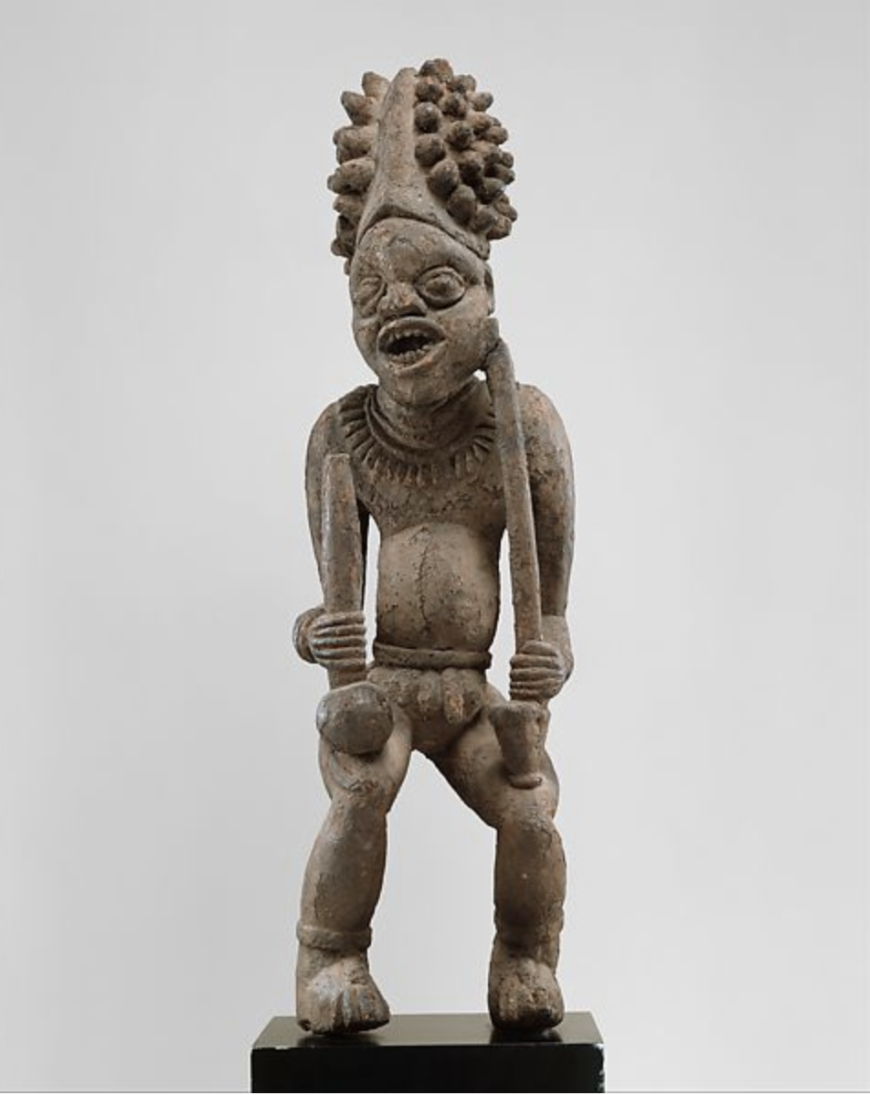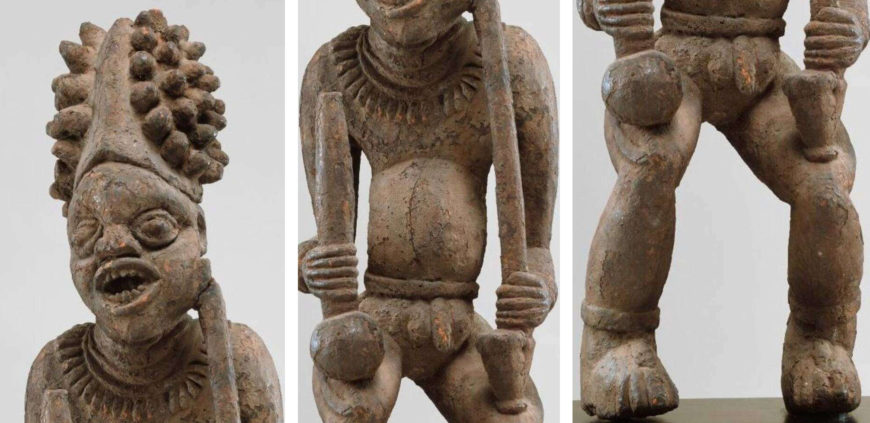
Commemorative Figure (Lefem), 19th–early 20th century, Bangwa, wood, organic matter, fiber, Cameroon, Grassfields region, 102.2 x 30.2 x 26.4 cm (The Metropolitan Museum of Art)
In the various Bangwa chiefdoms of western Cameroon, figurative sculptures, known as lefem, are created to commemorate royal ancestors. These monumental portraits depict the chief, or Fon, as well as other members of the royal family. Commissioned during the lifetime of the chief, the sculptures would be presented publicly after his death, during funeral ceremonies honoring the Fon and marking the installation of his successor. They were displayed in the palace courtyard along with other commemorative portraits of rulers from previous generations. Viewed together, these sculptures document dynastic lines of leadership and serve as visual reminders of the Fon’s legacy.

Details, Commemorative Figure (Lefem), 19th–early 20th century, Bangwa, wood, organic matter, fiber, Cameroon, Grassfields region, 102.2 x 30.2 x 26.4 cm (The Metropolitan Museum of Art)
This dynamic figure of a Bangwa Fon emphasizes the power, wealth, and privilege of his position. The cap he wears represents a type of prestige hat that is woven and decorated with knotted tufts of yarn. Around his neck is an elaborate collar of leopard’s claws, a symbol of the ruler’s strength. The Fon is depicted holding other official insignia of ritual importance. In his right hand is a beaded calabash, a container for palm wine; in his left is a long-stemmed pipe for smoking tobacco. Palm wine and tobacco were believed to have life-giving properties whose consumption reinforced the Fon’s power. The figure’s dynamic stance, with his head turning one way and the lower body another, is unusual in African sculpture. His bent legs, flexed arms, large bulging eyes, and open mouth further suggest that the potent energy of the Fon remains even after his death.


